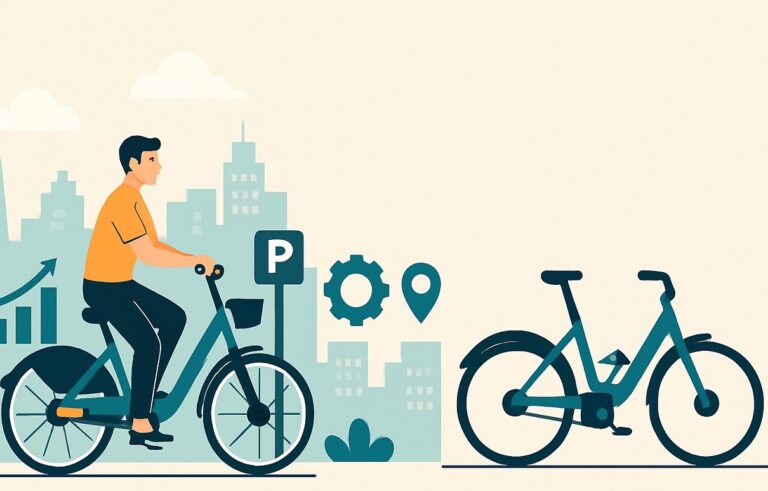Business history thrives on stories of daring individuals who made decisions that reshaped industries.
Yet, behind every bold leap lies a question: when does courage turn into carelessness?
The distinction between a visionary move and reckless behavior defines leadership quality, investor confidence, and entrepreneurial legacy.
Bold actions often drive innovation and inspire others to take calculated risks, but unchecked ambition can lead to disastrous consequences.
Vanderbilt’s aggressive expansion during the industrial era demonstrated how fearless execution can build empires, while cases like Enron reveal how disregard for ethical and financial prudence can destroy them.
Leaders walk a fine line where success and failure are often separated by timing, awareness, and discipline.
Table of Contents
ToggleThe Illusion of Hindsight

Success often rewrites history, making risky decisions appear brilliant. Failure does the opposite, turning once-celebrated choices into cautionary tales.
Hindsight creates a distortion that oversimplifies complex decision-making processes.
People tend to judge an outcome rather than evaluate the reasoning behind it. Collaborative Fund describes this phenomenon perfectly: “We only judge the process by its outcome. Which is dangerous.”
A startup that bet everything on one product might be hailed as visionary if it succeeds, but foolish if it fails.
This mental bias prevents fair assessment of strategy, risk analysis, and execution.
Entrepreneurs who understand this illusion focus on the integrity of their process, not just results.
They analyze variables, anticipate shifts, and adapt swiftly, accepting that success and failure can both emerge from the same decision pattern.
Business history reminds us that fortune and foresight often share the same DNA; perspective changes only after results unfold.
Business Risks vs. Gambling Risks

Risk-taking defines both entrepreneurs and gamblers, yet the two operate under very different rules of control, purpose, and accountability.
Business risk involves strategic decision-making designed to create long-term value, while gambling risk often relies on chance and emotional excitement.
The difference lies in preparation, probability management, and intent.
A successful business leader conducts research, anticipates setbacks, and uses risk as a tool to advance innovation.
A gambler, on the other hand, accepts uncertainty as entertainment or thrill.
While both require courage, only one relies on consistent learning, adaptation, and data-driven reasoning.
Key Differences:
- Business risks can be reduced through analysis, diversification, and planning. Gambling outcomes depend mainly on luck.
- Entrepreneurs use market data and performance metrics, while gamblers rely on odds and probability.
- Business risk aims for sustainable growth; gambling seeks immediate reward.
- Business decisions improve with experience and feedback. Gambling rarely rewards repeated behavior without luck.
Similarities also exist:
- Both involve uncertainty and emotional pressure.
- Both require self-discipline and awareness of limits.
- Both can destroy or build fortunes depending on the mindset applied.
Many confuse high-stakes business decisions with gambling, but true entrepreneurship involves controlled experimentation, not blind faith.
Successful leaders manage risk through measurable actions and contingency planning.
In contrast, gambling thrives on spontaneity and chance, an arena where outcomes cannot be forecasted through logic alone.
For those who engage in gaming for recreation, safety and responsibility matter above all.
If you are unsure where it is safe to gamble, visit Gamezone, a reliable platform designed for responsible entertainment and informed gaming choices.
Characteristics of Bold vs. Reckless Decisions

Chris Lopez captures the distinction between boldness and recklessness through intent, preparation, and emotional control.
Boldness thrives on courage guided by information, while recklessness grows out of impulsive ambition.
Bold leaders acknowledge fear but act through it with strategic clarity.
Reckless leaders dismiss fear and substitute research with optimism.
Key Differences:
| Trait | Bold | Reckless |
| Motivation | Strategic vision | Blind ambition |
| Risk Management | Calculated, informed | Unplanned, emotional |
| Outcome Dependency | Not reliant on luck | Often hinges on luck |
Boldness reflects patience and self-awareness. It involves listening to advisors, studying markets, and anticipating risks before taking action.
Recklessness, by contrast, feeds on ego and urgency. It disregards warning signs, skips due diligence, and treats caution as weakness.
Courage becomes effective only when paired with comprehension. Decision-making without foresight invites chaos, while informed boldness creates innovation.
Every leader must ask, “Am I being brave, or am I gambling everything without reason?”
The Role of Context and Timing

Context and timing can transform a once-brilliant strategy into a recipe for disaster.
What worked during one era might fail miserably in another.
Industry trends, technological advancements, and global sentiment constantly reshape the boundary between bold and reckless.
As one principle notes, “The only thing more dangerous than underestimating risk is thinking old strategies still apply.”
A company betting on outdated technology or ignoring emerging competitors displays recklessness disguised as confidence.
Timing amplifies or nullifies even the best ideas. Early adopters who read the market correctly seize opportunities; those who misread momentum lose resources and credibility.
Adaptability, therefore, defines sustainable leadership.
Bold moves require situational awareness, sensitivity to economic cycles, and readiness to pivot when conditions shift. Ignoring these variables turns daring action into self-inflicted failure.
Common Traps That Lead to Reckless Choices

Many entrepreneurs and executives fall into predictable traps that distort judgment.
Overconfidence built on previous success can create a false sense of invincibility. Ignoring due diligence, rushing decisions, and confusing activity with progress often accelerate downfall.
Lopez identifies skipping due diligence as a central cause of reckless decision-making. Others mistake urgency for necessity, assuming speed equals effectiveness.
Emotional attachment to ideas also clouds logic, leading leaders to “believe in something without fully understanding it.”
Common pitfalls include:
- Disregarding market research or expert advice
- Misinterpreting short-term wins as proof of long-term stability
- Relying on instinct instead of verified data
- Neglecting risk-mitigation plans in pursuit of fast rewards
Every trap originates in emotion:
- Pride
- Fear
- Impatience
Awareness of these tendencies allows leaders to build systems that separate analysis from impulse, ensuring decisions remain disciplined rather than destructive.
The Bottom Line
Success and recklessness often share a narrow, winding path. Great leaders learn to balance courage with clarity, ambition with humility.
The difference lies not in the absence of risk, but in how risk is managed. Bold visionaries shape the future through thoughtful action; reckless dreamers gamble it through unchecked confidence.
True leadership lies in mastery of decision-making under uncertainty — in knowing when to act and when to pause.



